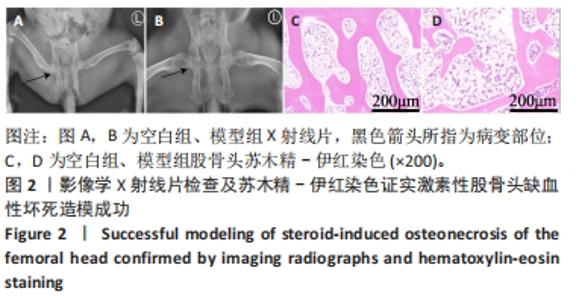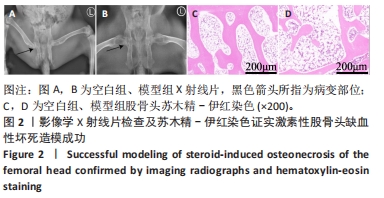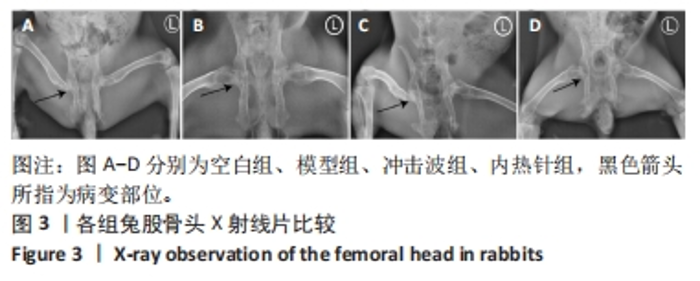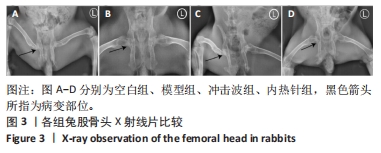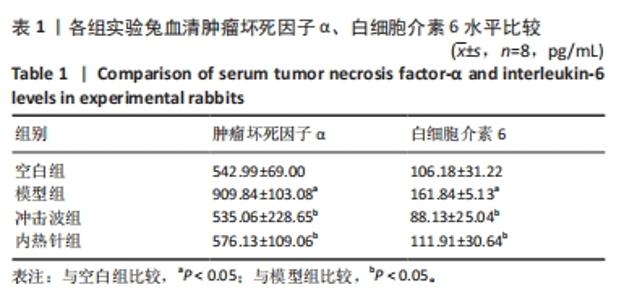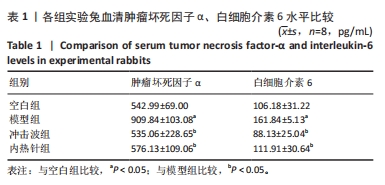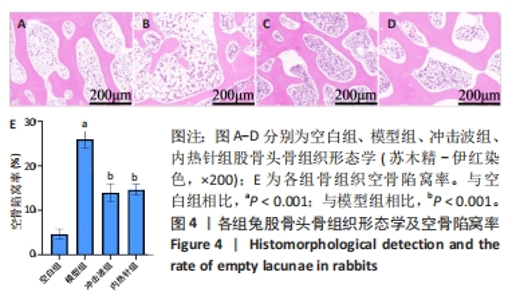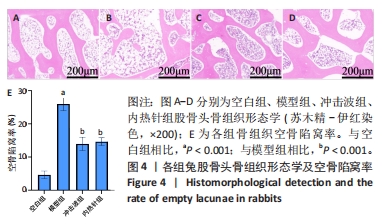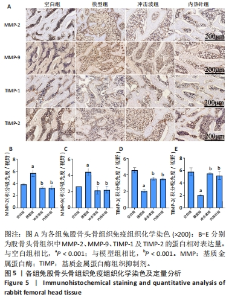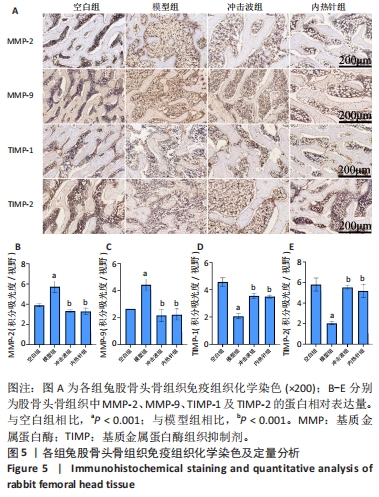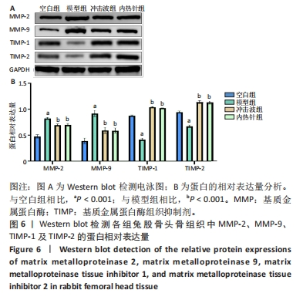[1] HUANG C, WEN Z, NIU J, et al. Steroid-Induced Osteonecrosis of the Femoral Head: Novel Insight Into the Roles of Bone Endothelial Cells in Pathogenesis and Treatment. Front Cell Dev Biol. 2021;9:777697.
[2] FANG S, LI Y, CHEN P. Osteogenic effect of bone marrow mesenchymal stem cell-derived exosomes on steroid-induced osteonecrosis of the femoral head. Drug Des Devel Ther. 2018;13:45-55.
[3] LIU Q, WU Y, LI S, et al. Ursolic acid alleviates steroid-induced avascular necrosis of the femoral head in mouse by inhibiting apoptosis and rescuing osteogenic differentiation. Toxicol Appl Pharmacol. 2023;475: 116649.
[4] REN GW, WEN SB, HAN J, et al. Network-Based Pharmacology and Bioinformatics Study on the Mechanism of Action of Gujiansan in the Treatment of Steroid-Induced Avascular Necrosis of the Femoral Head. Biomed Res Int. 2022;2022:8080679.
[5] LI H, ZHANG Y, HAO Y, et al. Proanthocyanidins Inhibit Osteoblast Apoptosis via the PI3K/AKT/Bcl-xL Pathway in the Treatment of Steroid-Induced Osteonecrosis of the Femoral Head in Rats. Nutrients. 2023; 15(8):1936.
[6] 朱道宇,杨前昊,高悠水,等.TLR4通路与激素性股骨头坏死关系的研究进展[J].中国骨与关节杂志,2019,8(1):75-79.
[7] 赵红星,黄媛霞,徐海斌,等.股骨头坏死早期大鼠股骨头骨组织中基质金属蛋白酶及其相关抑制剂的表达[J].西安交通大学学报(医学版),2017,38(2):231-234.
[8] 王建忠,王坤正,周荣兴,等.长期应用糖皮质激素对大鼠股骨头骨组织骨保护素/NF-κB受体活化因子配基-基质金属蛋白酶/基质金属蛋白酶组织抑制剂系统的影响[J]. 中国修复重建外科杂志, 2011,25(4):402-407.
[9] MESZAROS E, MALEMUD CJ. Prospects for treating osteoarthritis: enzyme-protein interactions regulating matrix metalloproteinase activity. Ther Adv Chronic Dis. 2012;3(5):219-229.
[10] DE ALMEIDA LGN, THODE H, ESLAMBOLCHI Y, et al. Matrix Metalloproteinases: From Molecular Mechanisms to Physiology, Pathophysiology, and Pharmacology. Pharmacol Rev. 2022;74(3): 712-768.
[11] 李涛,江蓉星,王敏,等.活血通络汤在家兔激素性股骨头坏死模型中对AKP、BGP、TNF-α影响的研究[J].中华中医药学刊,2018, 36(3):641-644.
[12] TAKEUCHI T, YOSHIDA H, TANAKA S. Role of interleukin-6 in bone destruction and bone repair in rheumatoid arthritis. Autoimmun Rev. 2021;20(9):102884.
[13] 邢更彦,张浩冲,刘水涛,等.中国骨肌疾病体外冲击波疗法指南(2019年版)[J].中国医学前沿杂志(电子版),2019,11(4):1-10.
[14] WANG CJ, HUANG CC, YIP HK, et al. Dosage effects of extracorporeal shockwave therapy in early hip necrosis. Int J Surg. 2016;35:179-186.
[15] 张艳玲,刘君伟,李春,等.基于JAK2/STAT3信号通路探讨温针灸改善膝关节骨关节炎兔软骨损伤的机制[J].针刺研究,2022,47(12): 1088-1094.
[16] 鲍杰伟,施凤飞,邱全河,等.电针对腰椎间盘退变模型大鼠炎症因子表达的影响[J].中国医药,2022,17(11):1671-1675.
[17] 张运玉,倪李鑫,符维艳,等.内热针的现状与趋势分析[J].中国疗养医学,2022,31(10):1025-1028.
[18] 黄丽萍,王刚,高谦,等.内热针治疗早期股骨头缺血性坏死的临床疗效观察[J].解放军医学院学报,2020,41(12):1202-1205.
[19] 田心保,许建峰,黄媛,等.内热针干预激素性股骨头缺血性坏死模型大鼠抑制破骨及促进新骨形成[J].中国组织工程研究,2022, 26(17):2642-2648.
[20] 席源,罗高斌,魏桂清,等.miR-206靶向Cx43调控ERK1/2通路在兔激素性股骨头坏死中的作用[J].中国临床解剖学杂志,2021, 39(2):154-160.
[21] XU J, GONG H, LU S, et al. Animal models of steroid-induced osteonecrosis of the femoral head-a comprehensive research review up to 2018. Int Orthop. 2018;42(7):1729-1737.
[22] LARSON E, JONES LC, GOODMAN SB, et al. Early-stage osteonecrosis of the femoral head: where are we and where are we going in year 2018? Int Orthop. 2018;42(7):1723-1728.
[23] 邓紫婷,文丽,贾英.体外冲击波对兔膝骨关节炎软骨组织中转化生长因子β1和白介素1β表达的影响[J].中华物理医学与康复杂志,2022,44(1):18-24.
[24] LIU F, WANG W, YANG L, et al. An epidemiological study of etiology and clinical characteristics in patients with nontraumatic osteonecrosis of the femoral head. J Res Med Sci. 2017;22:15.
[25] FANG L, ZHANG G, WU Y, et al. SIRT6 Prevents Glucocorticoid-Induced Osteonecrosis of the Femoral Head in Rats. Oxid Med Cell Longev. 2022;2022:6360133.
[26] 曾祥洪,梁博伟.股骨头坏死保髋治疗的新策略[J].中国组织工程研究,2021,25(3):431-437.
[27] 刘洋,刘飞,王俊华.内热针与温针灸对寒湿型腰痛症:随机对照研究[J].中医临床研究,2019,11(6):125.
[28] 陈冬,庄金刚,程肖芳.内热针疗法治疗慢性软组织损伤性疼痛研究概述[J].上海针灸杂志,2019,38(6):699-702.
[29] 董俊球,胡云,刘名锋.内热针治疗股骨头缺血性坏死48例[J].实用中医药杂志,2017,33(8):969-970.
[30] 朱仕强,许建峰,黑晓燕,等.内热针干预膝骨性关节炎兔软骨下骨Ⅰ型胶原、基质金属蛋白酶3和骨桥蛋白的表达[J].中国组织工程研究,2021,25(17):2636-2642.
[31] 骆小娟,张照庆,尹晶,等.内热针对第三腰椎横突综合征大鼠炎症反应及Akt/NF-κB信号通路的影响[J]. 中国中医基础医学杂志, 2020,26(7):908-911.
[32] 邓振军,郑志永,徐谦,等.激素性股骨头坏死发病机制的研究进展[J].世界最新医学信息文摘,2018,18(86):57-58.
[33] PAIVA KBS, GRANJEIRO JM. Matrix Metalloproteinases in Bone Resorption, Remodeling, and Repair. Prog Mol Biol Transl Sci. 2017;148: 203-303.
[34] AZEVEDO A, PRADO AF, FELDMAN S, et al. MMPs are Involved in Osteoporosis and are Correlated with Cardiovascular Diseases. Curr Pharm Des. 2018;24(16):1801-1810.
[35] KOU L, JIANG X, LIN X, et al. Matrix Metalloproteinase Inspired Therapeutic Strategies for Bone Diseases. Curr Pharm Biotechnol. 2021;22(4):451-467.
[36] 王建忠,武永刚,王坤正.激素性股骨头坏死患者骨组织MMP-2、MMP-9、TIMP-1、TIMP-2蛋白的表达[J].中华关节外科杂志(电子版),2012,6(1):91-96.
[37] WANG T, HE C. TNF-α and IL-6: The Link between Immune and Bone System. Curr Drug Targets. 2020;21(3):213-227.
[38] 张佳音.TNF-α与激素性股骨头坏死的关系研究进展[J].内蒙古医学杂志,2018,50(3):283-286.
[39] 张楠心,陈宣维,林文平.兔激素性股骨头坏死血清中肿瘤坏死因子α变化[J].中国中医药咨讯,2010,2(1):24-25.
[40] YOKOTA K, SATO K, MIYAZAKI T, et al. Characterization and Function of Tumor Necrosis Factor and Interleukin-6-Induced Osteoclasts in Rheumatoid Arthritis. Arthritis Rheumatol. 2021;73(7):1145-1154.
[41] 杜杰利,陈俊宇,李屹洲,等.在激素性骨坏死中IL-6与OPG/RANK/RANKL系统和MMP/TIMP系统的关系[J].世界最新医学信息文摘,2016,16(8):36-38.
[42] 杨国柱,周方策,卢丽,等.护骨胶囊对激素性股骨头坏死大鼠炎性因子的影响[J].中华骨质疏松和骨矿盐疾病杂志,2021,14(6): 621-627.
|
